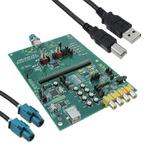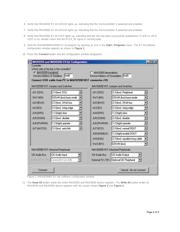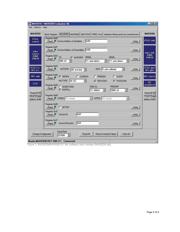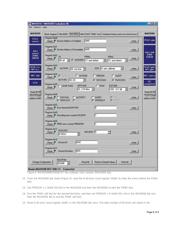下载

Maxim > Design Support > Technical Documents > Application Notes > Automotive > APP 5053
Maxim > Design Support > Technical Documents > Application Notes > High-Speed Interconnect > APP 5053
Maxim > Design Support > Technical Documents > Application Notes > Video Circuits > APP 5053
Keywords: high speed interconnect, GMSL, BER, eye diagram, pre-emphasis, equalization, serializer, deserializer, serdes,
PRBS
APPLICATION NOTE 5053
Using 2.5Gbps SerDes with Built-In Bit-Error Rate Test
Circuitry Makes Measuring Link Quality Easy
By: Craig Sakamoto
Wai Phyo
Jun 06, 2011
Abstract:
Any application
that involves sending information at high data rates over long distances requires tests to ensure
good link quality. Thus, this applies to the MAX9259/MAX9260 gigabit multimedia serial link (GMSL) serializer/deserializer
(SerDes), a chipset that sends audio/video data at payload rates of up to 2.5Gbps over a single twisted-pair cable up to
15m in length. This application note describes how to use the built-in bit-error rate (BER) tester and how to analyze eye
diagrams to measure link quality with the MAX9259/MAX9260 evaluation (EV) kits. It also assists in proper jumper settings,
measurement steps, and interpretation of results.
Introduction
Any application that involves sending information at high data rates over long distances requires tests to ensure good link
quality, and the MAX9259/MAX9260 gigabit multimedia serial link (GMSL) serializer/deserializer (SerDes) are no exception.
This chipset sends audio/video data at payload rates of up to 2.5Gbps over a single twisted-pair cable up to 15m in length.
One of the most straightforward tests of link quality is the bit-error rate (BER) test. Here, the transmitter sends a known
data pattern across the serial link and the receiver checks the incoming data for any bit errors. A second test, the eye
diagram, gives a graphical presentation of the link quality.
Both of these tests require a suitable pattern to be generated and transmitted over the serial link. While various test patterns
are available, one of the common choices is to use is a long pseudorandom bit sequence (PRBS).
The MAX9259/MAX9260 chipset features an internal PRBS generator and BER checker to simplify testing, requiring only a
parallel clock and a UART port to program the devices. The MAX9259 sends a 2
30
- 1 (in 32-bit mode) or a 2
22
- 1 (in 24-
bit mode) PRBS data pattern across the serial link. The MAX9260 checks the received data and records the number of bit
errors. This application note describes how to set up the MAX9259/MAX9260 evaluation (EV) kits for the internal PRBS test
with bit-error analysis. It also compares test results for the default and optimized preemphasis/equalizer settings using a
15m cable.
Note that data sheets for the chipset and the EV kits, as well as the latest software, can be obtained through Maxim's
website.
Required Equipment
MAX9259 and MAX9260 EV kits
Agilent® 33250A arbitrary waveform generator or similar device for clock generation
USB cable
Shielded twisted-pair cable with Rosenberger connectors
(Optional to analyze the eye diagram)
Page 1 of 9








